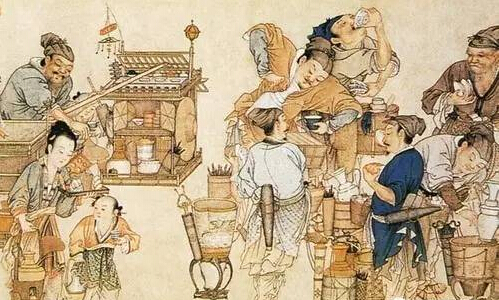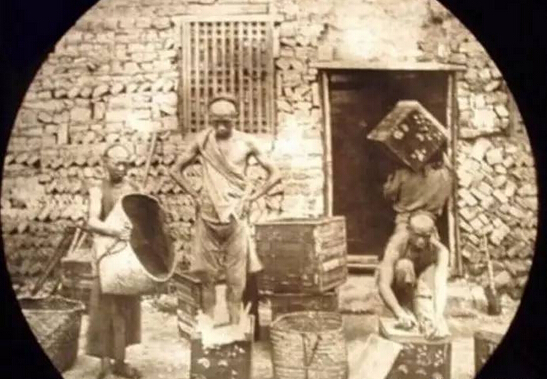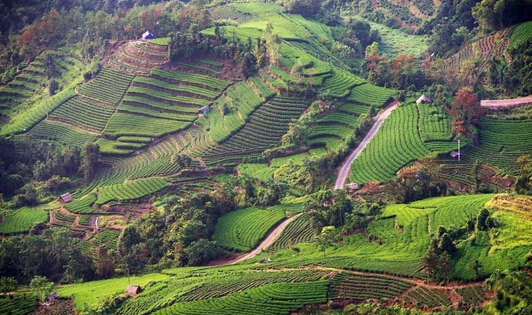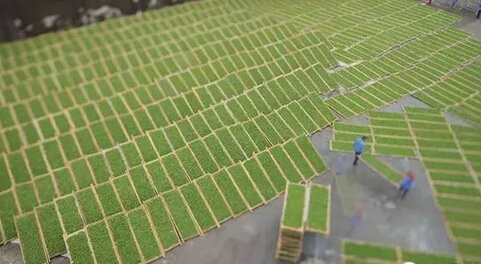White Tea, a treasure among tea, has a long history. The name 'white tea' first appeared in Lu Yu's 'The Classic of Tea' from the Tang Dynasty, which recorded: '300 li east of Yongjia County lies White Tea Mountain.' Professor Chen Yuan noted in 'Tea History' that 'east 300 li is the sea; it should be south 300 li, referring to Fuding in Fujian (then part of Changxi County), the origin of white tea.'

There are differing views in tea academia. Some believe white tea originated in the Northern Song Dynasty, where wild white tea from the imperial tea gardens in Fujian's Beiyuan was processed into compressed tea, differing from modern methods. Others argue it began in the Ming or Qing Dynasty, focusing on its unique 'withering and drying' process.
Some scholars propose that white tea predates green tea, as ancient people sun-dried tea leaves for preservation, marking the earliest form of tea. Textual evidence first mentions white tea in 'Dongxi Tea Records' (around 1064), while Lu Yu's 'The Classic of Tea' referenced a 'white-leaf tea.' Emperor Huizong of Song's 'Da Guan Tea Treatise' noted white tea as a tribute during the Shaosheng era (1094–1098). Fujian tribute tea official Cai Yong praised it: 'Beiyuan's spiritual buds, refined under frost, are cherished for their cloud-like whiteness.' Rare and precious, white tea was reserved for emperors and revered as a 'tea auspice.'

Tea experts define white tea in two ways: 1) Tea made from naturally white tea leaves, like Anji white tea (introduced in 1982), processed as green tea; 2) Traditional white tea, made from ordinary tea leaves through natural withering, light fermentation, and drying, retaining intact buds with silvery hairs and a mild flavor.
Modern white tea processing formalized around 1796 during the Qing Jiaqing era. Due to sluggish black tea sales, Fujian's Zhenghe County shifted to white tea for export, establishing it as a formal tea category. The method persists today.

White tea is mainly produced in Fujian (with small amounts in Taiwan), including Zhenghe, Fuding, Jianyang, and Songxi counties. The hilly terrain, mild climate, and fertile soil nurture premium varieties like Fuding Da Bai, Zhenghe Da Bai, and Jianyang Shui Xian. Based on leaf type and processing, white tea divides into Baihao Yinzhen, Bai Mudan, Gong Mei, Shou Mei, and new-style white tea.
Tea master Zhang Tianfu noted in 'Fujian Tea History' that white tea originated in Fuding, initially using native tea leaves. The Fuding Da Bai variety, from Taimu Mountain's ancient 'Lv Xue Ya,' was cultivated in 1857 and used for silver needle tea in 1865. Tea from native plants was called 'Tu Zhen' or 'Xiao Bai.'

Zhenghe County may have discovered Da Bai tea in the 12th century. 'Xuanhe Beiyuan Tribute Tea Records' mentioned 'white tea made in 1112.' Zhenghe, then part of Beiyuan, was famed for white tea, earning its name from the emperor's era. The Tie Shan Da Bai variety's history remains debated. Cultivated around 1880, it was used for silver needle tea by 1889 and Bai Mudan by 1922. Bai Mudan was first made in Shuiji (now Jianyang), likely after Fuding's white tea but before Zhenghe's. Shui Xian Bai, another variety, emerged in the early 20th century.
In summary, white tea production began in Fuding, spread to Shuiji, then Zhenghe. Varieties evolved from Xiao Bai to Da Bai, then Shui Xian Bai.
